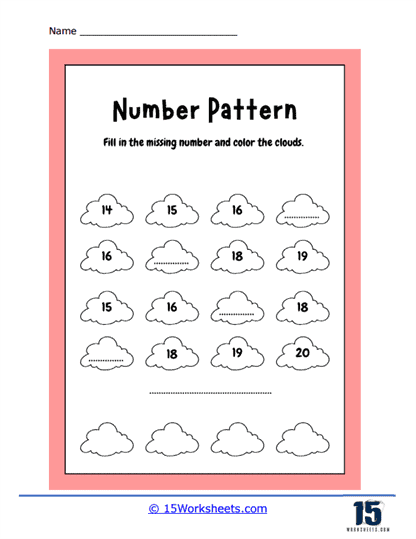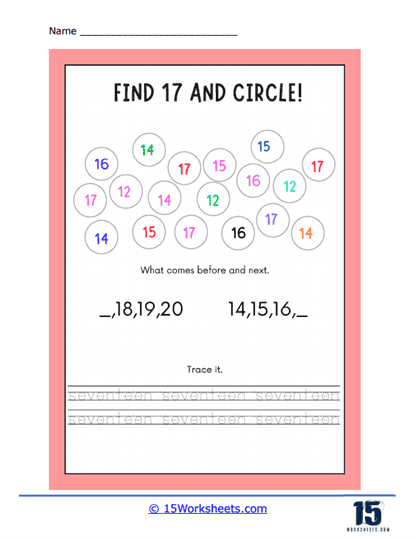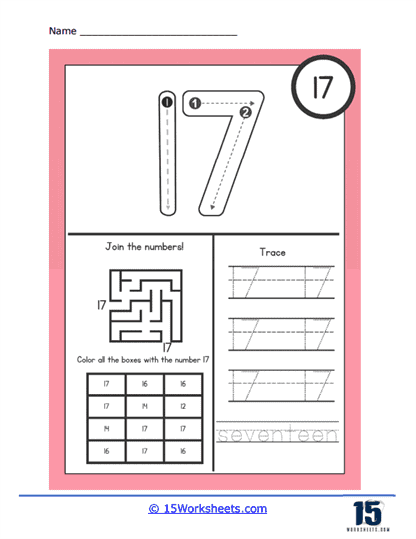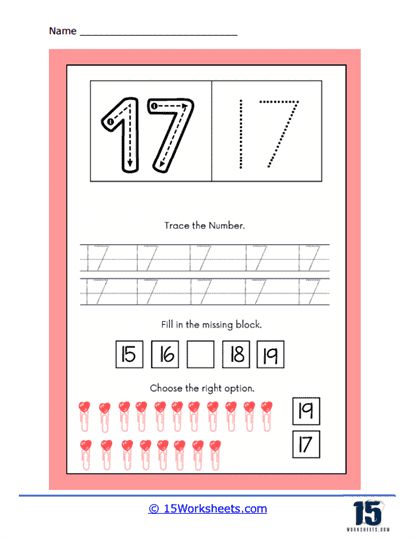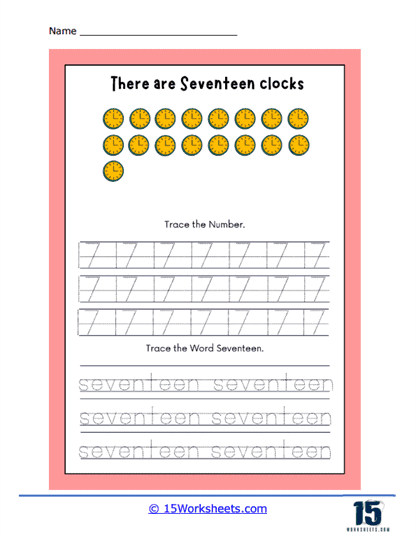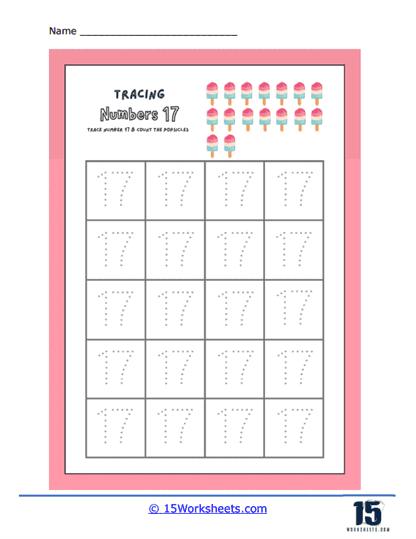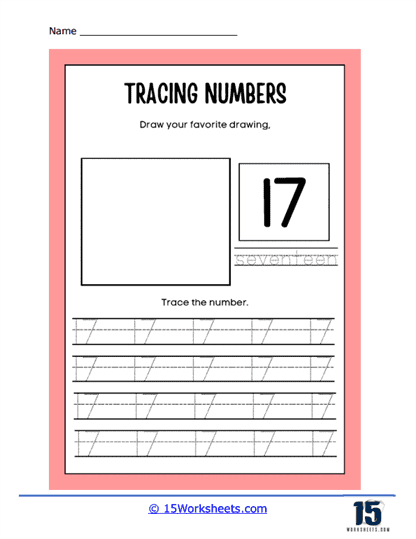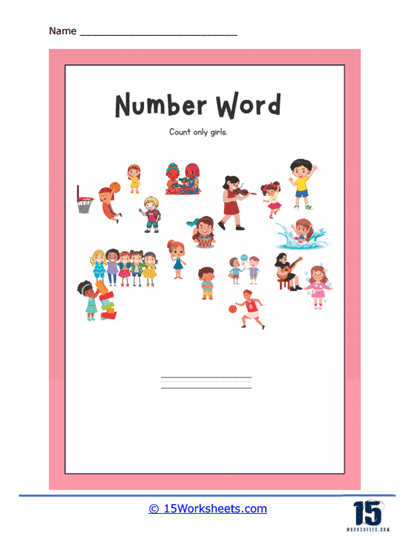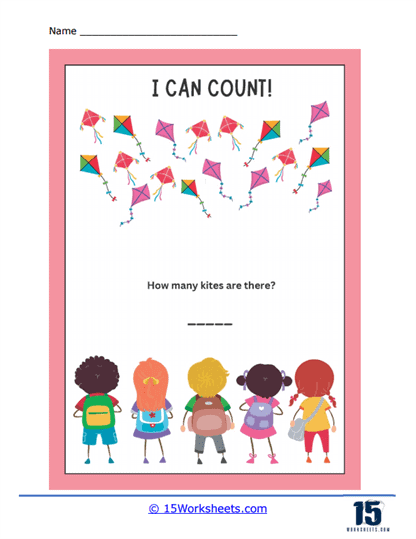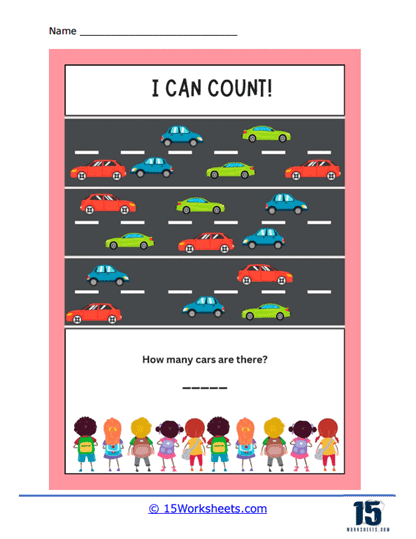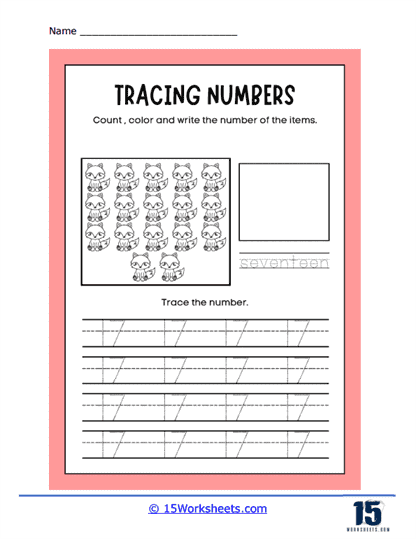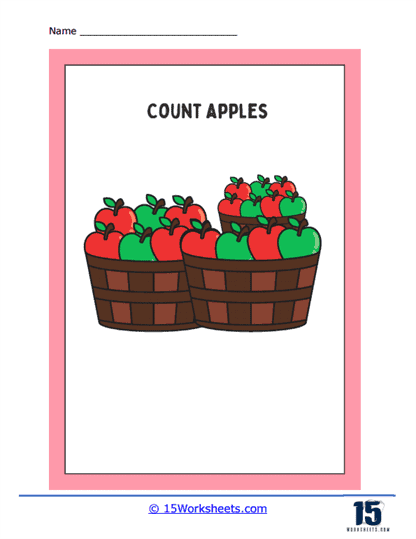Number 17 Worksheets
About These 15 Worksheets
This series pf number 17 worksheets are super-practical tools that were created to help early elementary school children grasp the concept of the number 17. These worksheets offer a variety of exercises tailored to encourage a firm understanding and knowledge of the number 17 and its relationships with other numbers. As engaging, user-friendly resources, they offer teachers a means to cultivate basic numeracy skills in a fun and interactive manner.
Number 17 worksheets offer diverse types of exercises to accommodate different learning styles and to ensure a well-rounded approach to understanding this number. One standard type of exercise is the counting and writing exercise. Here, students may be tasked with counting up to 17 using pictorial representations like animals, shapes, or everyday items. Such exercises help children visualize the quantity that the number 17 represents. Alongside counting, these exercises often include tracing and writing the number 17, strengthening both number recognition and fine motor skills.
Another type of exercise that is featured on these worksheets involves number lines. Students may be presented with a number line that goes up to 17 or beyond and be asked to identify where 17 falls within that sequence. This exercise develops an understanding of numerical order and the concept of less than and greater than.
Addition and subtraction problems involving the number 17 may also be incorporated. These exercises allow children to understand the relationships between numbers. For instance, they will learn that adding three to 14 results in 17, or that subtracting two from 17 gives 15. These foundational arithmetic exercises foster a practical understanding of how numbers interact.
Connecting dots or coloring exercises are also commonplace in these number 17 worksheets. These activities offer a more playful approach to learning. Children connect dots in a sequence up to 17 to form a picture or color specific objects among a larger group to count up to 17. Such activities not only make learning fun but also boost pattern recognition skills and support the development of fine motor skills.
Comparison exercises may also feature on these worksheets, asking students to determine whether a given number or group of items is less than, more than, or equal to 17. Such exercises introduce students to comparative reasoning in mathematics.
Working with number 17 worksheets offers significant benefits for improving children’s numeracy skills. Numeracy is the ability to understand and work with numbers. These worksheets contribute to numeracy development in several ways. Firstly, they enhance number recognition, as students repeatedly see, write, and work with the number 17. With practice, children gain an inherent familiarity with the appearance and concept of this number.
Secondly, the worksheets improve counting skills. Through counting exercises, children practice counting up to 17 and beyond, understanding the quantity that this number represents. This forms the foundation for more complex mathematical skills, such as addition and subtraction.
Thirdly, the worksheets develop a fundamental understanding of basic arithmetic. By solving simple addition and subtraction problems involving 17, children start to comprehend the relationships between numbers and how they can be manipulated through mathematical operations.
The worksheets promote logical thinking and problem-solving. Whether filling in a missing number in a sequence or deciding which group of items is more than or less than 17, students learn to apply logic to solve problems. They learn to recognize patterns and make comparisons, crucial skills in numeracy and broader mathematical and scientific thinking.
These worksheets present students with a multifaceted, engaging approach to cultivating a deeper understanding of the number 17. Through various exercises that involve counting, writing, simple arithmetic, comparison, and sequence filling, these worksheets promote number recognition, counting skills, basic arithmetic understanding, logical thinking, and problem-solving. They are, therefore, instrumental resources in fostering foundational numeracy skills in young learners.




